GARDENING
The shape of things
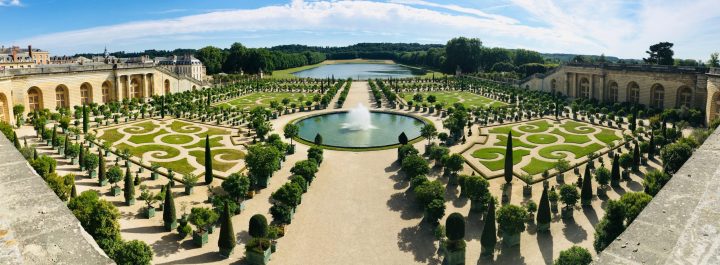
Gardens are first and foremost about composition. And topiary, the art of clipping shrubs or trees into ornamental shapes, can be an integral part of any composition. It adds structure, weight and order to any design.
Topiary used to be called “Vegetable Sculpture” in the days of Pliny the Elder (AD 23-79) back in the early Roman Empire. The “topiarius” was the gardener responsible for keeping order in the garden. It is an art form that emerged from the necessity of trimming, pruning and training trees.
Ancient Greek philosophers, such as Aristotle, argued that gardens and the landscape form a spiritual link between the physical and the metaphysical, humanity and nature. Every garden was seen as a union of this kind: nature separated, bordered, transformed by humans.
Aristotle felt that realising natural possibilities that cannot realise themselves was the very definition of craft and an invitation to philosophy. All his teachings were given in his garden in Athens, the Lyceum. Even as early as the 5 BC, trees were recorded as planted in grid designs in Persia.
With the revival of classical learning during the Renaissance, topiary re-emerged as an art form. Victorian gardeners, too, saw it as a way of giving a house a desirably venerable appearance, an unchanging permanence.
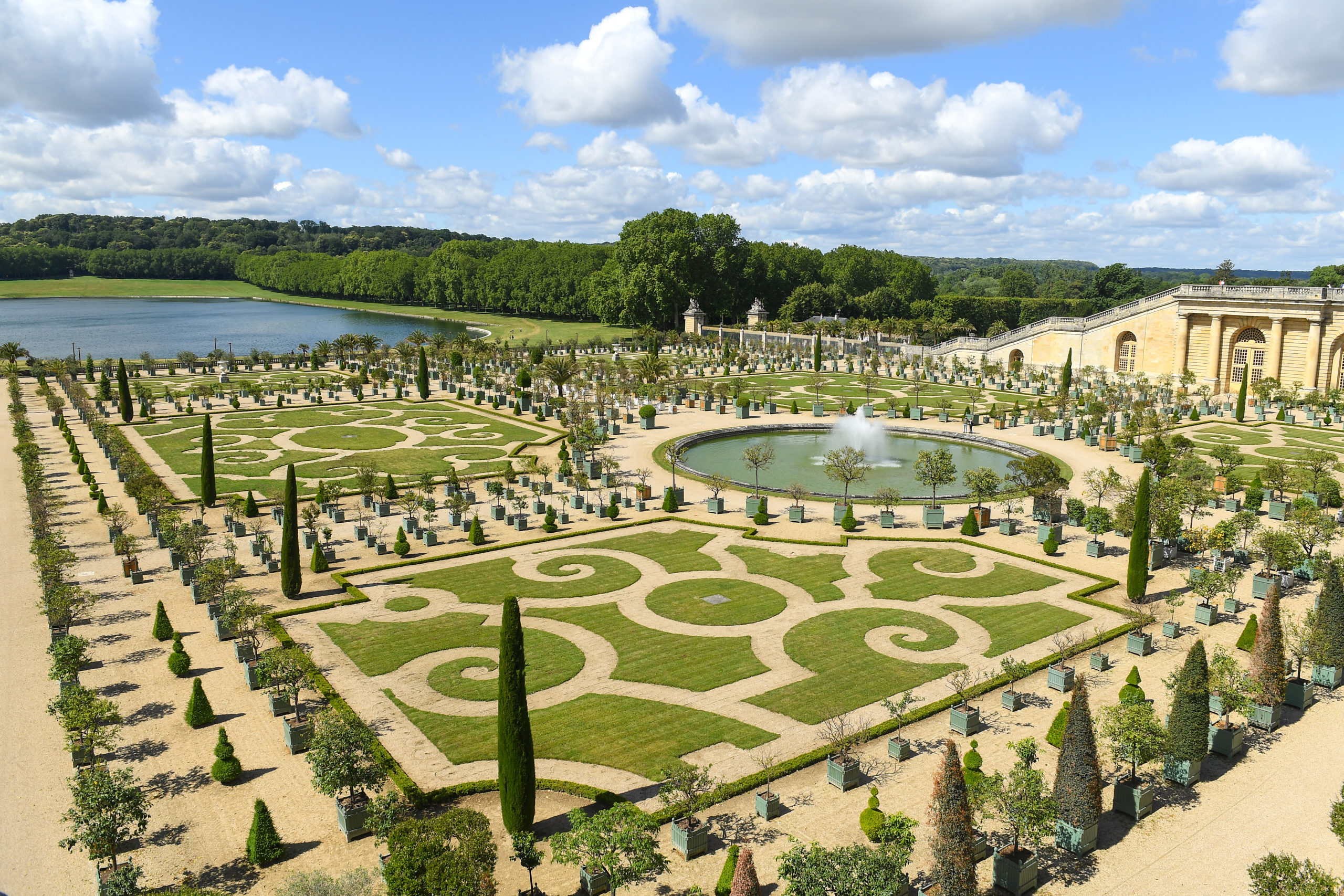
A general view of the gardens at the Chateau de Versailles. (Photo by Pascal Le Segretain/Getty Images)
Spanish garden designer, Fernando Caruncho, is a modern-day topiarius. Caruncho studied philosophy in Madrid in 1975 and was greatly influenced by the classical philosophers, especially their thoughts on geometry, light and knowledge of nature. His study of poetry, music and painting helped shape his eye and sensibility to “read” a site and translate it into a contemporary garden. His work has been described as “ancient agriculture that meets formal contemporary design”.
In some of his most famous gardens, such as the wheat parterres in the Mas de les Voltes garden or his Casa Caruncho, both in Spain, his juxtaposition of bordered wheatfields, gnarled olive trees, carefully clipped hedges, mimicking cloud formations and the use of upright cypresses, which counteract the very symmetrical horizontal hedges, shows a simplicity of thought with astounding sophistication.
Another contemporary topiary artist is Paul Bangay in Australia. His “Stonefields” garden among the wineries region near Melbourne features some of the cleverest, most beautifully executed clipped squares, circles and walkways. He interplants his squares with tulips each year to alter the symmetry and to offer surprise.
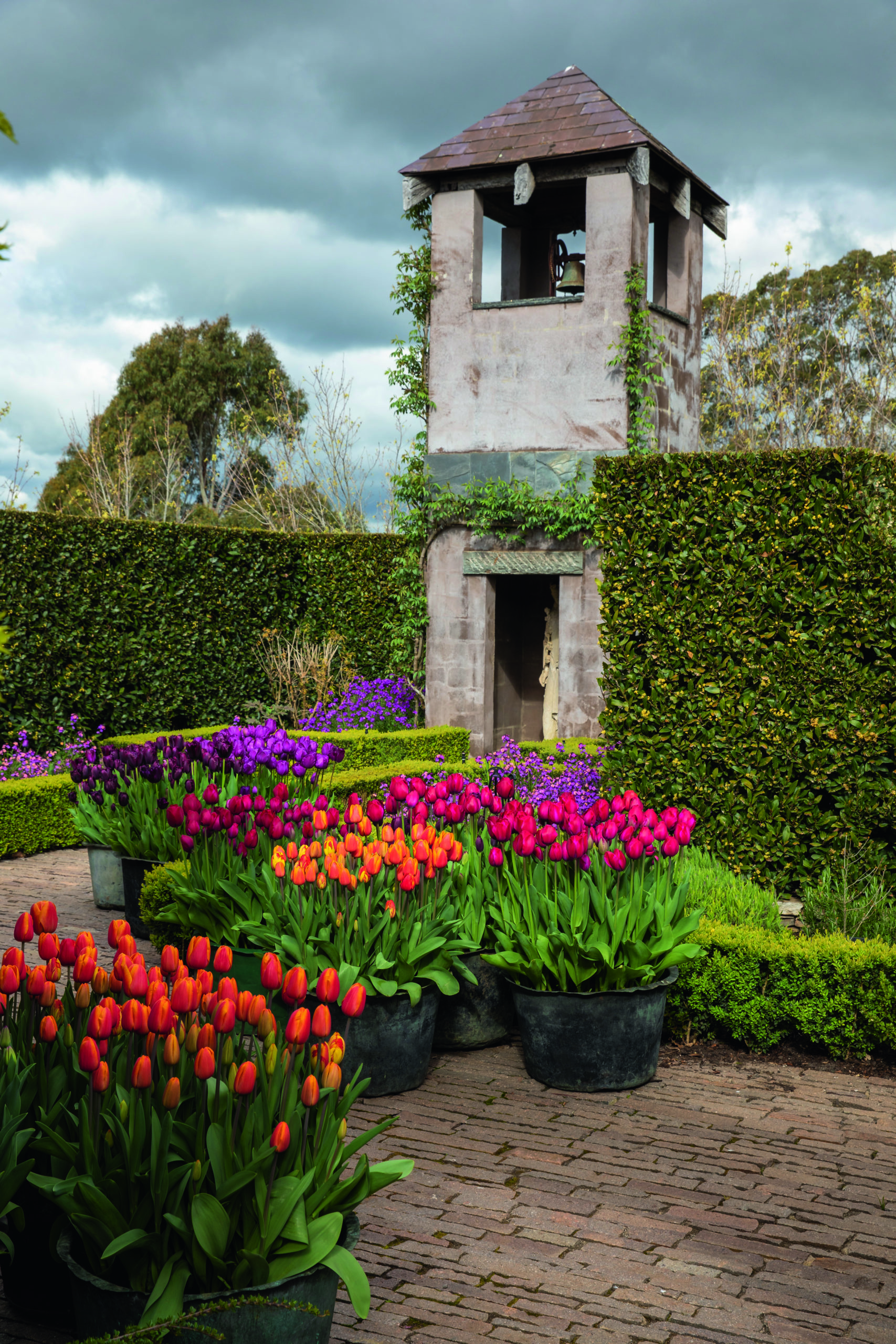
Stonefields Spring (Photo: Simon Griffiths)
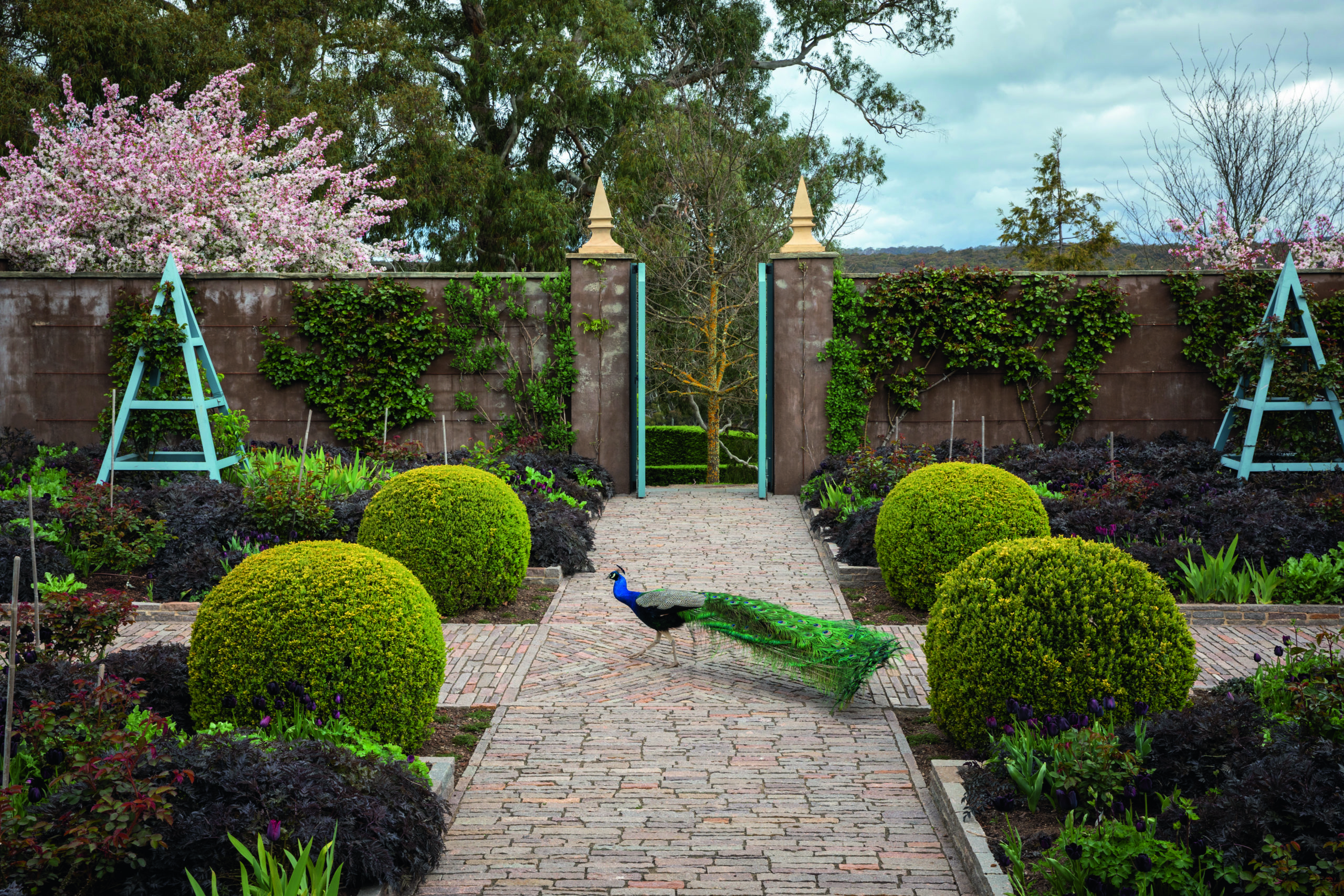
Stonefields Spring (Photo: Simon Griffiths)
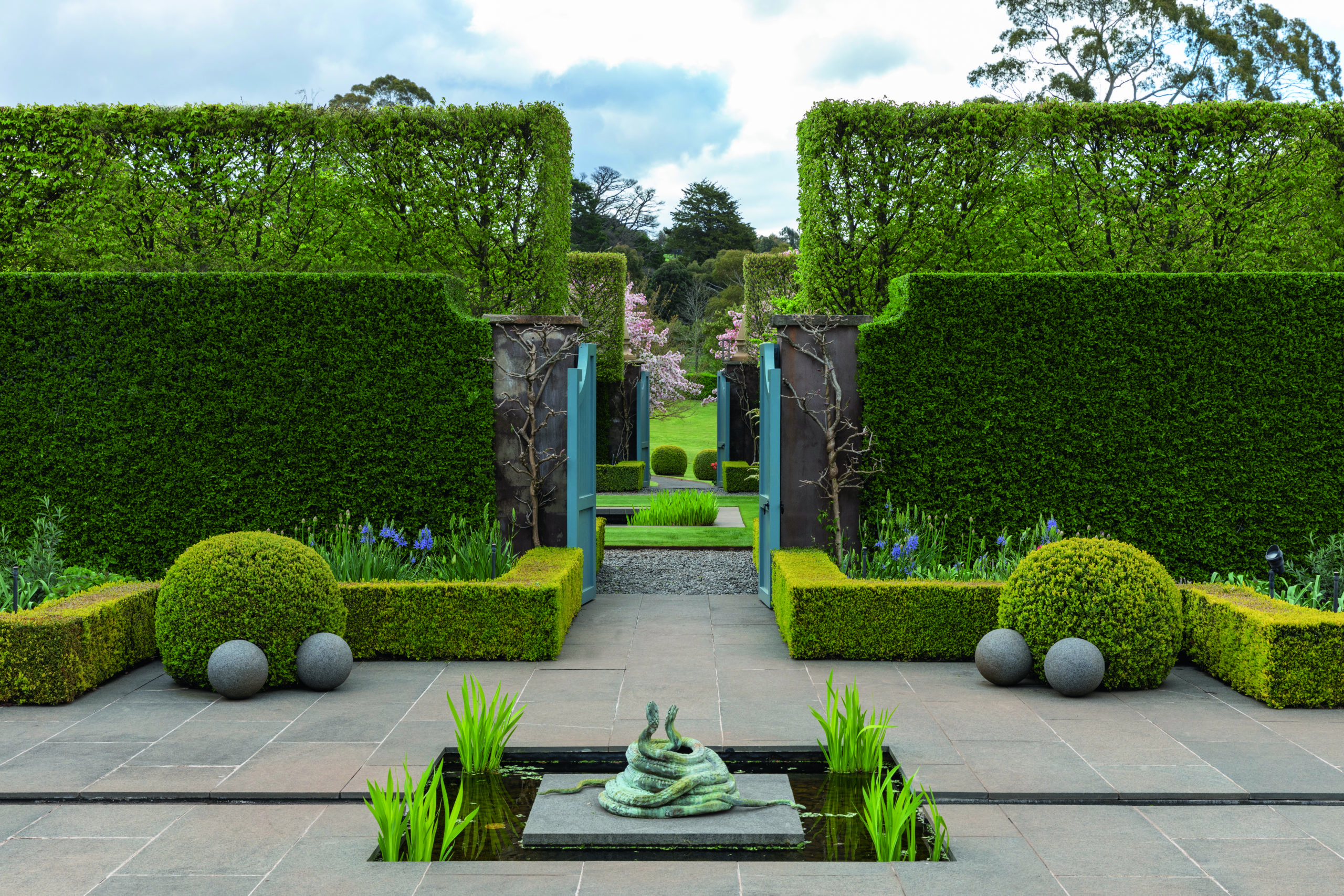
Stonefields Spring (Photo: Simon Griffiths)
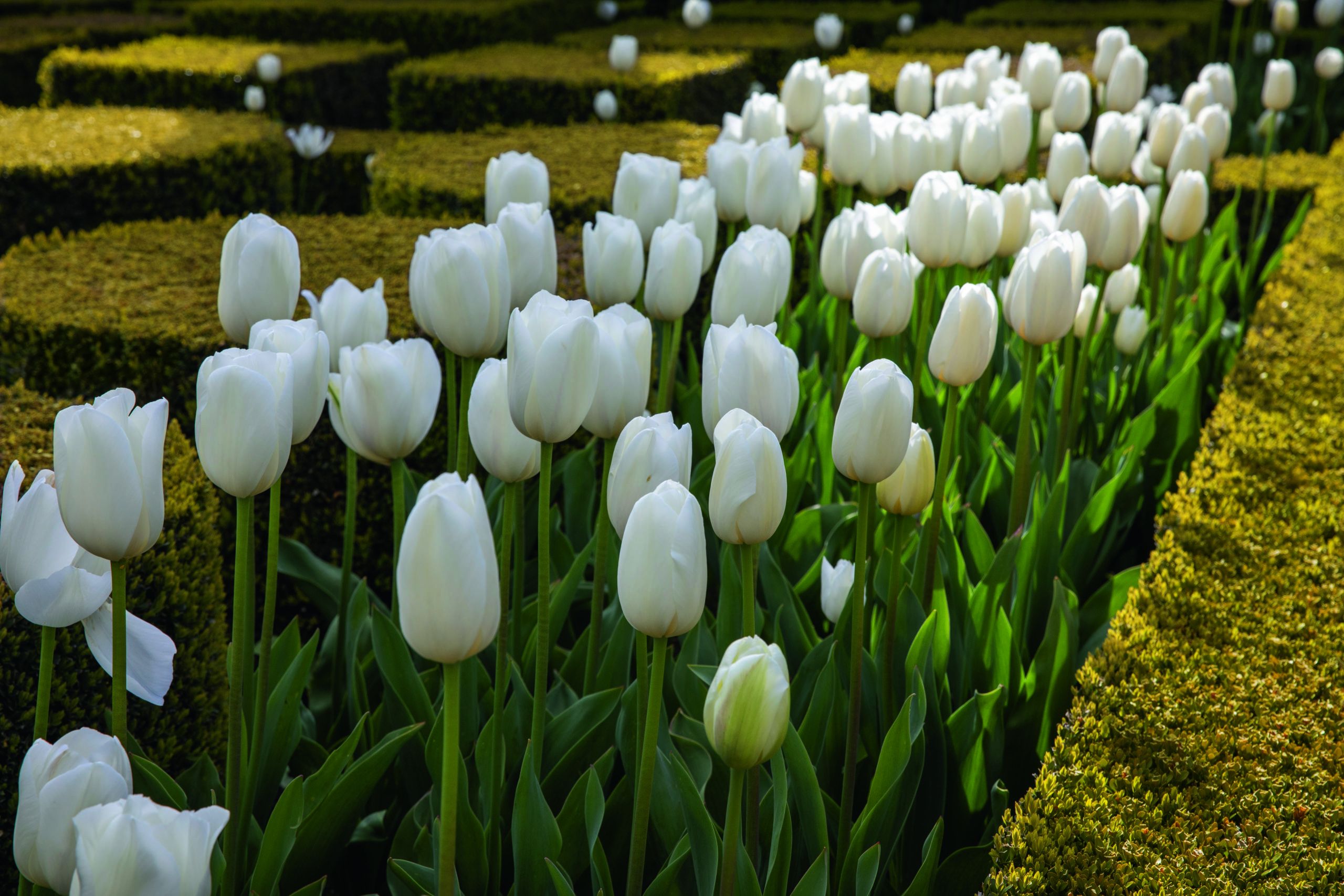
Stonefields Spring (Photo: Simon Griffiths)
Topiary shapes can be made in two ways – either by training a plant on a pre-built shape, or by freehand cutting, that is, letting the plant first develop naturally for two to three years, and then clipping it into whatever shape you like. Whimsically, you can design birds, horses, dogs, urns – whatever takes your fancy. For example, bamboo sticks can be fixed to the plant to train leader shoots in the desired direction.
“Poodling” has gained popularity on the US west coast – giving tightly clipped, rounded shapes to the foliage on the branches. Light and shadows play an important role, such as how the light shines on silvery leaves and the shadows cast by the shapes. Cones, obelisks, pillars and spheres are popular shapes.

Life size topiary figures of the Beatles adorn the traffic island at Liverpool’s South Parkway rail station on March 26, 2008, in Liverpool, England. The figures of the famous fab four are made from privet bush and staff at the station have been trained in how to prune them. (Photo by Christopher Furlong/Getty Images)
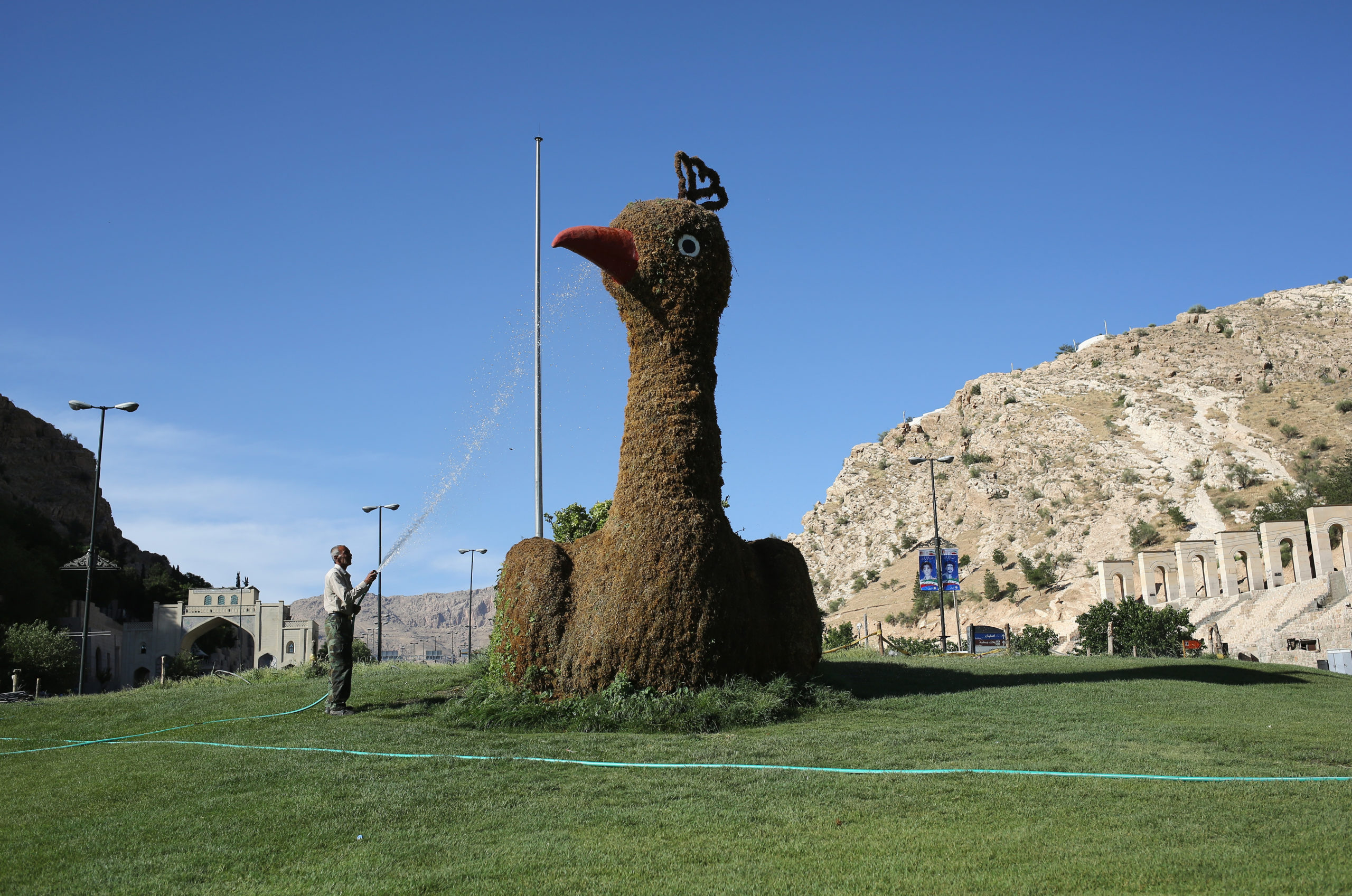
A goundskeeper waters a topiary peacock at Quran Square on May 29, 2014 in Shiraz, Iran. (Photo by John Moore/Getty Images)
Most importantly, though, is to continue feeding the plant during the clipping process to keep it strong.
Some of the most impressive gardens in the world are built on a grid structure with clipped shapes. You can visit the Alhambra in Spain, the Boboli gardens in Florence and the gardens at Vaux-le-Vicomte near Paris.
There are endless magnificent examples in the world, but in South Africa, the art of clipping and cloud gardening is just re-emerging.
Plants that are readily available and that would clip beautifully are waterberry, teucrium, anisodontea, escallonia, freylinia, rhagoda, westringia, and the obvious ones such as eugenia, viburnum, rosemary, abelia and buxus. Interplant these with wild South African grasses, build rills and create fountains in between, set sculptures and plinths on corners. Copy cloud formations and rolling shapes. Plant a palm tree among the shapes for a change in texture.
The possibilities are endless, once you have a sharp pair of shears. So get clipping and let your imagination run riot. DM/ ML

















 Become an Insider
Become an Insider
So well written and that from a girl from the Cape!